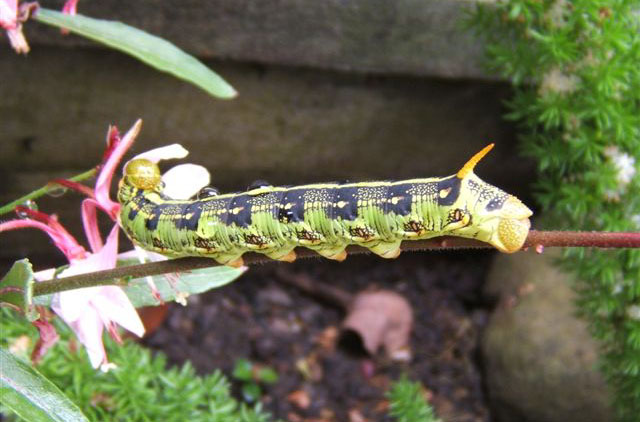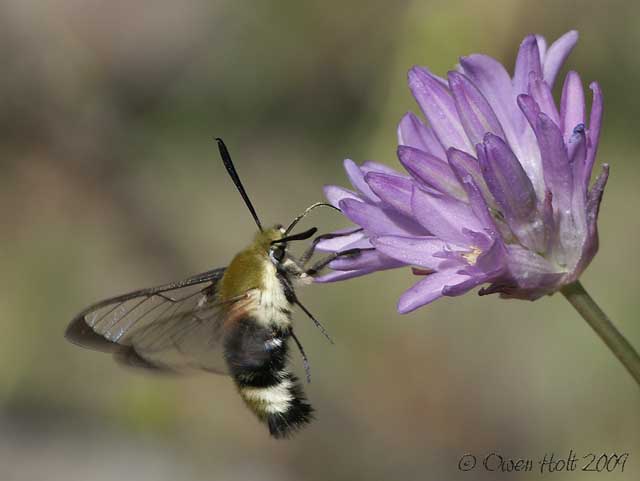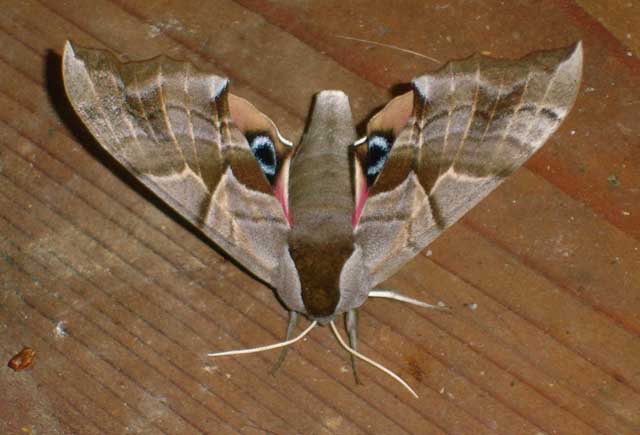Santa Clara County
Sphingidae

|
|
Updated as per James P. Tuttle's The Hawk Moths of North America; April 7, 2009 |

Owen Holt (OH) of San Jose, Santa Clara County, confirms Hyles lineata, Hemaris diffinis, Manduca sexta, Eumorpha achemon and Sphinx perelegens, and sends this beautiful image of Hemaris diffinis.

Hemaris thetis, Mt. Hamilton, Santa Clara County, CA,
May 20, 2009, 2000 foot elevation, courtesy of Owen Holt.

Smerinthus cerisyi, Gilroy, Santa Clara County, California,
April 4, 2009, 1600 feet, couortesy of Laurie Weber.
It is hoped that this checklist, with the thumbnails and notes, will help you quickly identify the moths you have encountered.
A WO" after the species name indicates that I have no confirmed reports of this species in Santa Clara County, but I (William Oehlke) expect that this moth is present.
A USGS indicates the moth is reported on the USGS website and/or in Moths of Western North America, #2. Distribution of Sphingidae of Western North America, revised, an excellent little booklet available through Paul Opler.
Please help me develop this list with improved, documented accuracy by sending sightings (species, date, location), preferably with an image, via email to Bill Oehlke.
Sphinginae subfamily
Smerinthini Tribe:
Macroglossinae subfamilyDilophonotini Tribe:
Hemaris thetis, Mt. Hamilton, Santa Clara County, May 20, 2009, Owen Holt. Philampelini Tribe:
Macroglossini Tribe:
|
Enjoy some of nature's wonderments, giant silk moth cocoons. These cocoons are for sale winter and fall. Beautiful Saturniidae moths will emerge the following spring and summer. Read Actias luna rearing article. Additional online help available.
Use your browser "Back" button to return to the previous page.
This page is brought to you by Bill Oehlke and the WLSS. Pages are on space rented from Bizland. If you would like to become a "Patron of the Sphingidae/Catocala Sites", contact Bill.
Please send sightings/images to Bill. I will do my best to respond to requests for identification help.
 Show appreciation for this site by clicking on flashing butterfly to the left. The link will take you to a page with links to many insect sites. |